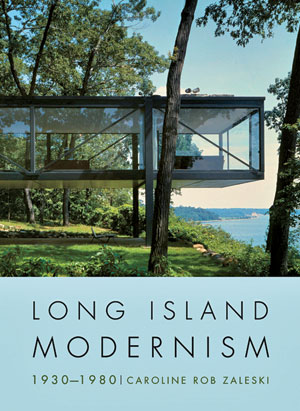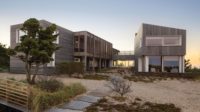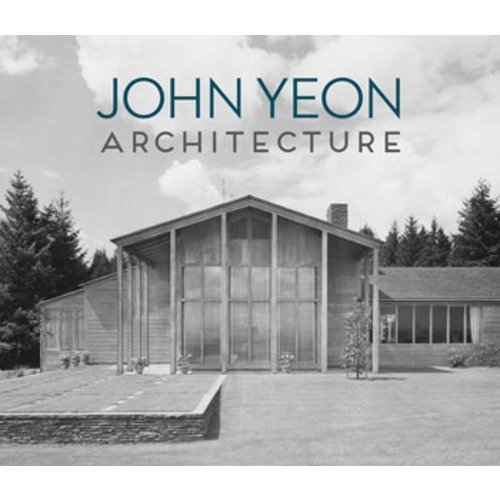This fascinating book is as much a social history as a documentation of architects working on Long Island during the period of “high Modernism,” when ideology was considered as important as space and form. Organized in chapters devoted to individual architects, rather than in a coherent thematic order, the book includes a surprising number of well-known architects who built on Long Island, such as Ludwig Mies van der Rohe, Antonin Raymond, Frank Lloyd Wright, Richard Neutra, Paul Rudolph, and Marcel Breuer.

Disappointing, although not entirely unexpected, is the almost total absence of women, with only one, Jane Yu, noted among the 25 chapters. This points to one of the unexpressed themes of the book—that Long Island architecture during this time, perhaps mirroring the contemporary culture, was an unrepentant old-boys network where backroom connections were the main means of procuring work. Wallace Harrison, a close friend of Governor Nelson Rockefeller and Robert Moses, looms large in this context. Virtually all the major commissions covered in the book—from the SUNY campus at Stony Brook to the one at Old Westbury—went to architects who had either worked for or were connected to Harrison. Mies, following in his habit of bedding female clients such as Edith Farnsworth, continued with the artist Mary Callery, doing a strangely Zen/Tudor barn renovation for her in Huntington in 1950. Quirky, wealthy women provided patronage to the arts in general; for example, Marian Willard opened her 300-acre estate in Locust Valley to Fernand Léger and others. She hired Josep Llu's Sert, then offered a property to the architect and his wife for their own Modernist house. Besides Richard Meier, Percival Goodman is the token Jewish architect, presented mainly for his 1950s Modernist synagogues that established the typology for this postwar-period structure. African-American architects seem to have been nonexistent at the time; if there were any on Long Island, they aren't mentioned here.
Unfortunately, the book lacks an informative introductory essay to provide context to the historical period. Neither the architectural issues nor the social currents are outlined, except in snippets in each chapter, making a more complete understanding of Long Island Modernism exceedingly difficult.
Despite uncovering some interesting architectural nuggets and names in the region, none of the examples changed my perception of Long Island between New York City and the Hamptons as anything other than the Bermuda Triangle of design, the land of the sordid Joey Buttafuoco and Amy Fisher, the vulgar Howard Stern, and the Amityville Horror. In keeping with this cultural black hole is the architecture of the campus of Old Westbury by John Johansen, Alexander Kouzmanoff, and Victor Christ-Janer and SUNY Stony Brook by Damaz, Pokorny and Weigel with Gruen and Partners. So truly banal, insipid, and awful are these places that they exemplify the reasons the public soured on Modern architecture and planning, creating the groundswell of change that resulted in Postmodernism, which Zaleski decries for its pastiche of historical styles. But is that really so different from what pedigreed Modernists George Nelson and Gordon Chadwick did with their Spaeth House of 1955 in East Hampton—a Modern interpretation of McKim, Mead & White's William G. Low House? Perhaps not, but one would never know by the piecemeal manner in which architecture is presented here. Still, the book is worth its price for the juicy gossip and historical photographs, many of which have never been seen before.
Alexander Gorlin practices architecture in New York City and is the author of Tomorrow's Houses: New England Modernism, The New American Townhouse, and other books.




Post a comment to this article
Report Abusive Comment